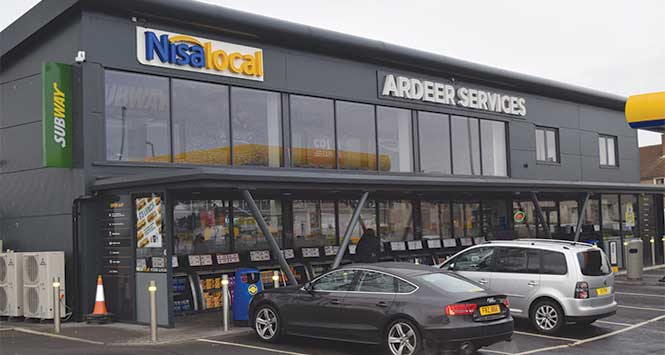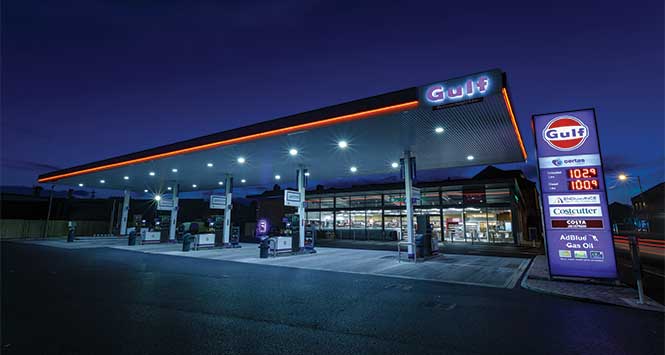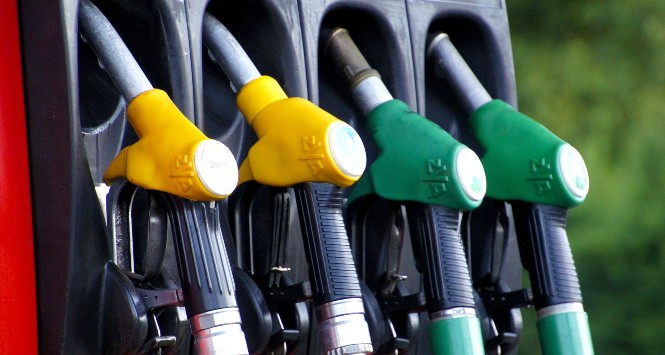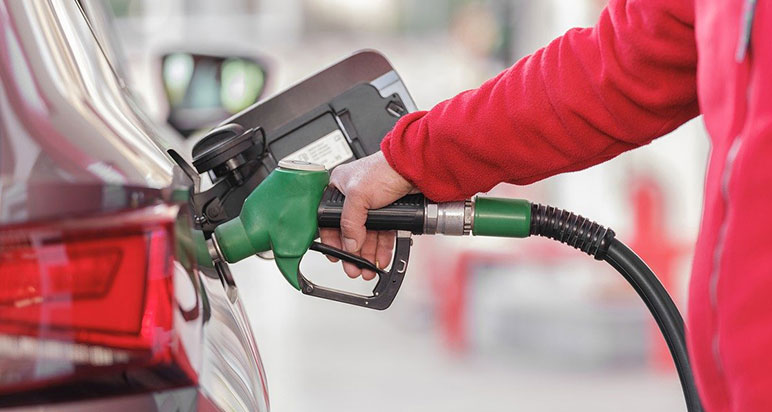The forecourt continues to shed its grubby image as it fast tracks its way to becoming the leader of the independent retail pack.
Gone are the days when the words unkempt and unloved were synonymous with forecourts. The once-grubby façade of the petrol station has been wiped away, replacing the half a dozen pumps and a kiosk selling a lukewarm can of coke, a packet of Quavers and a scratch card with everything a modern-day shopper could need and then some.
Forecourts have turned the model of being a pump-with-a-shop on its head into becoming a shop-with-a-pump. But, as any local retailer will attest to, a shop’s success can only come from hard work, careful management and maintenance.
Operators have risen to the challenge, taking on board the evolutions in petrol station industry as well as those in convenience retail and ensuring they are more than competition for their major multiple counterparts. The most recent Association of Convenience Stores (ACS) Forecourt Report acknowledges this rise, with forecourts growing into a fuel-stop-convenience-store hybrid.
From food to go to doing a load of washing, the modern forecourt is much more than it used to be. But just what are the biggest opportunities that lie ahead and where should retailers be focusing their efforts to be bringing in shoppers for more than just a fuel stop?
The footfall drivers
The ACS report shows that 77% of UK forecourts now offer cold food to go, 70% have a coffee machine, 46% have a hot food counter, 35% have incorporated an in-store bakery and 29% offer a microwave for customer use. In other words, food to go is here to stay. It is a mega-trend in convenience retailing in general and for the forecourt it is no exception, especially as forecourts are by definition an on the go location.
Commuters are among the most likely to visit a forecourt, and as the average commuter spends more than £10 a day on lunch, coffee and other on the go food and drink occasions, maintaining a strong offering will stop drivers making a pit stop elsewhere.
Jet’s Retail Accounts Manager for Scotland, Paul Yates, observed a rising consumer demand for high quality on-the-go coffee, which led to Jet’s decision in 2015 to join forces with eXpresso Plus to introduce a coffee-to-go initiative for its independent dealer network. With 48% of food-to-go shoppers making unplanned additional purchases there are strong commercial arguments for enhancing a forecourt’s range.
For any retailer, having a unique selling point can be a genuine driver for shoppers. Fuel may be the obvious pull, but it is by no means unique, and Gavin Rothwell, Senior Retail Insight Manager at grocery research organisation IGD, says that a forecourt is well placed to carve itself a destination for specific dietary needs in the on the go market. He champions forecourts as paving the way for a wider food-to-go offer, saying: “Although many retailers and specialists are focusing their efforts on breakfast, this is a relatively small market and spend per trip can be quite modest. Food-to-go shoppers are especially interested in products that suit particular diets, with 34% looking for a larger range of vegetarian products, 25% more dairy-free products and 23% seeking more vegan or gluten-free options.”
Other features such as car-washing and tyre-filling facilities are expected, as well as the availability of special buy items like in-car essentials or wood and coal. Many forecourts are also becoming click and collect pick-up locations with Amazon shoppers able to collect their purchases from parcel lockers located in a number of fuelling stations. As forecourts are both accessible and secure on a round-the-clock basis, having an Amazon parcel locker can attract more drivers to the stations, who may go on to buy petrol or goods from the shop on their pit stop.
Several forecourts in Scotland have also installed self-service laundry units from Photo-Me including Denis McCormack’s Spar store in Polbeth and Mahmood Saleem’s Nisa store in Stevenston. The units provide not one but two reasons for shoppers to visit – to put their clothes into the machine and then collect it when it’s finished.
Industry overview
Although the UK forecourt industry is undergoing general improvements, it is worth noting that in recent memory it has become a sector in decline. A decade ago there were around 14,800 open forecourts reported in the UK. Today that number has shrunk by 43% to 8,425 sites. This is a drastic decline, but if you look back to this time last year, the figure was 8,487, a net reduction of 62 sites, showing that the decline has significantly slowed.
In terms of shop fascia, Spar has overtaken Tesco with 1,054 shops. The retailer broke the 1000 forecourt stores mark in 2016 after adding 141 forecourt shops over the course of the year. The Tesco/Tesco Express shop fascia is in second place, remaining on 691 sites (including the Esso/Tesco Alliance sites as well as the shops on their own Tesco forecourts), falling marginally behind Spar with a 16.5% share of the forecourt shop market.
Morrisons stopped its trial of Morrisons shops on Motor Fuel Group forecourts and is now testing with Rontec. Sainsbury’s has put its Sainsbury’s Local Shops on five Euro Garages forecourts which have traditionally been with Spar shops. MRH recently announced its intention to trial with Co-operative shops on a number of its forecourts. More than 16% of forecourt shops (1,232) have no brand, although this is 130 less than the previous year. Less than 9% (750) of forecourts have no shop whatsoever.
What next?
Despite the current focus on retail, forecourts remain by definition a place for drivers to top up on fuel. There is of course an ongoing battle between the supermarkets and dedicated fuel suppliers, but in recent years the price gap has been closing, which is great news for independent retailers. Be it tech or food to go, the forecourt is gaining momentum and there is a clear sense of optimism and enthusiasm surrounding the industry.
The future of forecourts?
Case Study: Ardeer Service Station
It is one thing to maintain a forecourt, but it is another to refurbish one. Teaching the masterclass is Mahmood Saleem, whose recent upgrade of the Ardeer Services in Stevenson scooped him the Retailer of the Year Award at our SLR Rewards earlier this year, and it’s easy to see why.
In 2016, Mahmood invested £1.5m in a complete transformation of his existing Aryshire site, with the end result being an 18-nozzle Jet forecourt and a 2,700-sq feet Nisa store which boasts the very latest in retail innovation and convenience technology.
Jet Ardeer Services is a two-storey building with a Subway franchise, ice cream parlour, customer toilets and storage room on the ground floor. Upstairs is a staff kitchen, offices, a meeting room and walk-in fridge/freezer storage.
“Before, when staff had a break, they had to have their lunch or dinner at the counter,” Mahmood explains. “There was nowhere for them to go. If I had reps coming for a meeting, I would worry about more than one person showing up, because there was nowhere for them to stand.”
One of the upstairs offices doubles as a stockroom for the tobacco products, ensuring that all tobacco stock is secured away from customers. Each slot in the unit is reserved and numbered for a different product line.
Tobacco was always a big seller for the existing store, so when planning the new store, in order to maximise retail floor space and adhere to changes in tobacco law, Saleem introduced a state-of-the art tobacco gantry system. The bespoke tobacco gantry system was designed and installed by Birmingham-based automated specialists, Navarra Retail Systems. Saleem is one of the first forecourt convenience stores in the UK to introduce this solution.
At the tills on the ground floor, staff use a touch-screen to request customers’ choice of tobacco product. The selected product is then dispensed from the secure vending unit upstairs through a chute to the till. The system is integrated into the EPoS, so if a product is out of stock, staff are unable to complete the sale at the till.
“The system is a bit like a very sophisticated vending machine, with the chosen product dropping down a chute to the tills,” Mahmood enthuses. “When customers ask for tobacco products staff simply click on the product icon on the till and the requested pack is in their hand within seconds. It’s fast and secure, but it also frees up space behind the tills for non-tobacco products and ensures that I’m adhering to tobacco legislation which requires that no products are on display.”
It’s easy to see that it was money well spent, but it does beg the question as to what triggered the massive revamp. “The reason we wanted to spend so much money here is the potential in the location,” says Mahmood, and it’s easy to where the money has gone, with no expense spared. “So many people around here don’t have the time or the patience to go to Morrisons. It can take 25 minutes to get one item from Morrisons, but here it would only take five minutes. They can jump in and jump out.”




